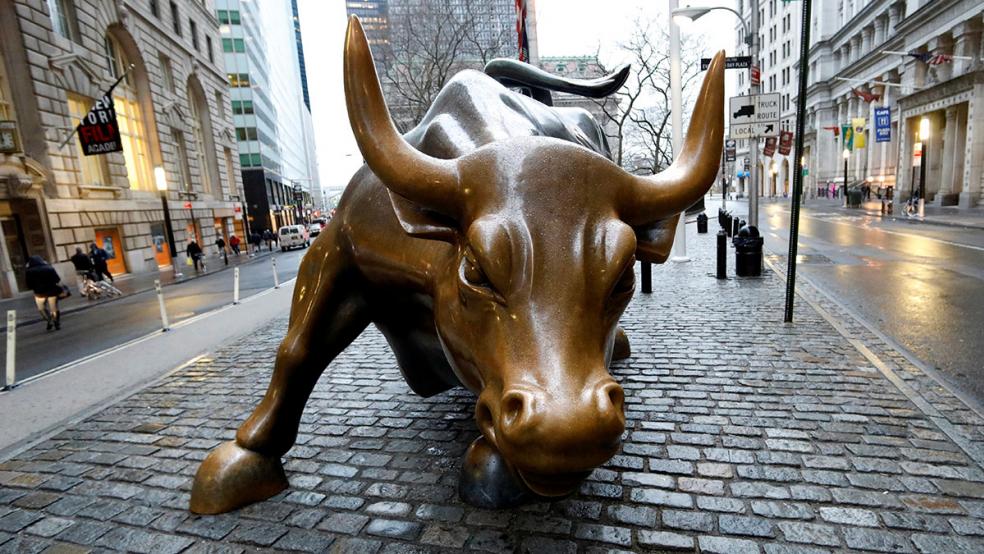Economic growth in the second quarter was a bit stronger than previously estimated, the Commerce Department announced Wednesday. GDP grew at a 4.2 percent annual rate in the April-June quarter, up from the initial estimate of 4.1 percent and the best performance since the third quarter of 2014.
The surprise upward revision provided fresh data to support Republicans’ claims that their economic policies are working. “GDP revised upward to 4.2 from 4.1. Our country is doing great!,” President Trump tweeted.
The big question for economists is whether the higher level of growth is sustainable. On that front, the new data contained some important signals that analysts cautioned were less favorable. Personal consumption was revised downward by 0.2 percentage points, and most of the upward revision was produced by changes in import and inventory components, economists at Goldman Sachs said. “Overall the GDP revision should lead us to revise down our views about the strength of the economy,” former Obama economic adviser Jason Furman tweeted.
Three data points that touch on fiscal policy in the revised report:
- Business investment was revised higher to 8.5 percent, up from the initial estimate of 7.3 percent, driven in large part by purchases of software. The Trump administration maintains that companies will invest their tax-cut windfalls in ways that eventually boost wages, so economists will keep a close eye on this data point.
- Government spending growth was revised upward to 2.3 percent, driven by increased defense spending. The spending deal this past spring is providing a significant boost to economic growth.
- Nominal corporate profits jumped 14 percent from the previous quarter, hitting a new all-time high. The tax cuts are a major contributor to the higher profits at U.S. firms.
Treasury Secretary Steven Mnuchin said on Tuesday that he expects to see 3 percent annual growth this year and for years to come — a level of growth that would generate enough additional tax revenue to pay for roughly $1.5 trillion in tax cuts over the next decade.
However, few if any independent analysts accept Mnuchin’s outlook for sustained growth, and the idea of paying down the debt seems farfetched in a fiscal environment defined by falling tax revenues and increased federal spending. According to an analysis from the Committee for a Responsible Federal Budget in May, the U.S. would need something like record growth simply to balance the federal budget, let alone pay down the national debt:
“We estimate that balancing the budget through higher economic growth alone would take 4.8 percent average growth over the next decade, or 5.9 percent if temporary tax cuts and spending increases were continued. Even the first amount would be nearly unprecedented for a ten-year period since World War II, and would be nearly two and a half times the average growth that the Congressional Budget Office (CBO) projects for that period. Policymakers cannot rely on growth alone; it will take hard choices on spending and taxes to get to balance.”




